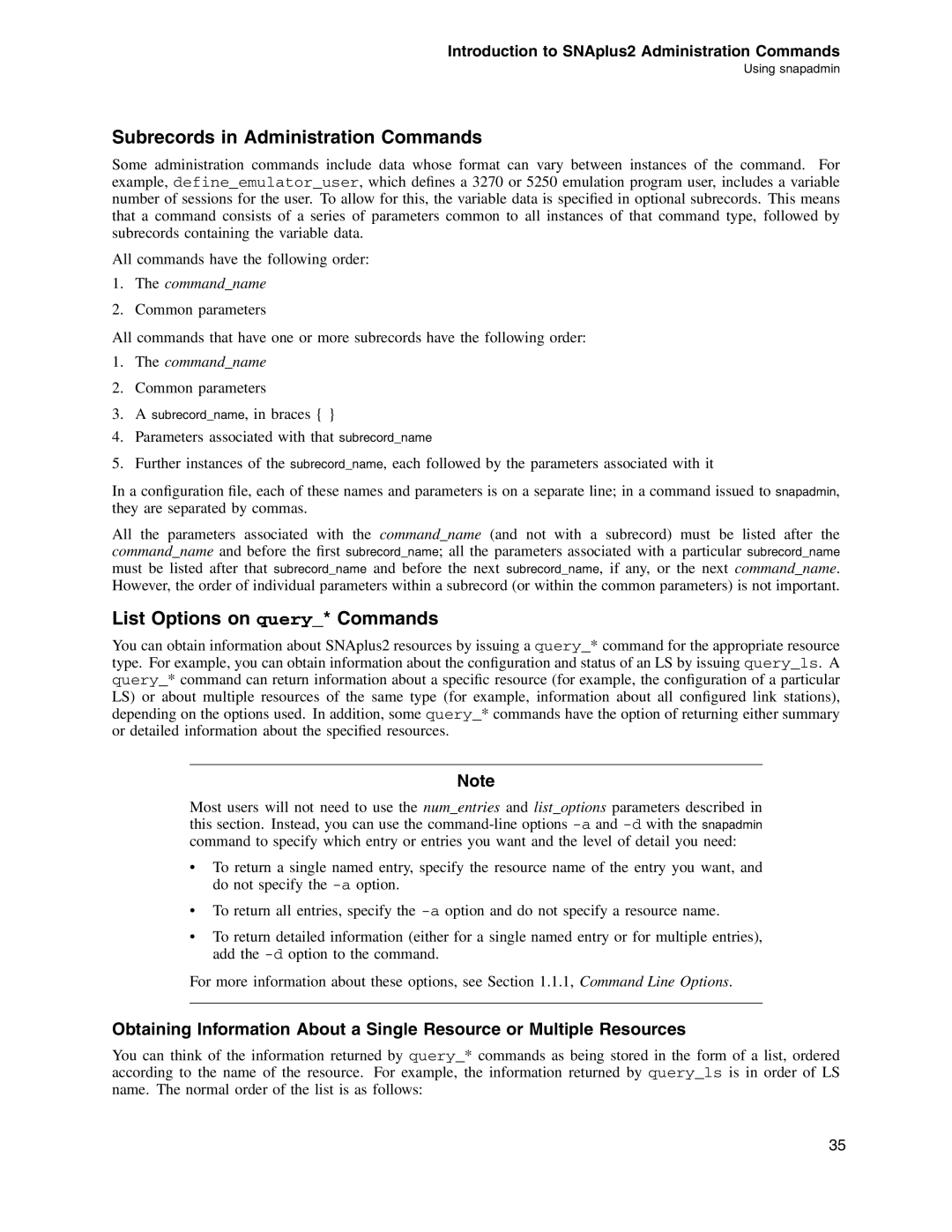
Introduction to SNAplus2 Administration Commands
Using snapadmin
Subrecords in Administration Commands
Some administration commands include data whose format can vary between instances of the command. For example, define_emulator_user, which defines a 3270 or 5250 emulation program user, includes a variable number of sessions for the user. To allow for this, the variable data is specified in optional subrecords. This means that a command consists of a series of parameters common to all instances of that command type, followed by subrecords containing the variable data.
All commands have the following order:
1.The command_name
2.Common parameters
All commands that have one or more subrecords have the following order:
1.The command_name
2.Common parameters
3.A subrecord_name, in braces { }
4.Parameters associated with that subrecord_name
5.Further instances of the subrecord_name, each followed by the parameters associated with it
In a configuration file, each of these names and parameters is on a separate line; in a command issued to snapadmin, they are separated by commas.
All the parameters associated with the command_name (and not with a subrecord) must be listed after the command_name and before the first subrecord_name; all the parameters associated with a particular subrecord_name must be listed after that subrecord_name and before the next subrecord_name, if any, or the next command_name. However, the order of individual parameters within a subrecord (or within the common parameters) is not important.
List Options on query_* Commands
You can obtain information about SNAplus2 resources by issuing a query_* command for the appropriate resource type. For example, you can obtain information about the configuration and status of an LS by issuing query_ls. A query_* command can return information about a specific resource (for example, the configuration of a particular LS) or about multiple resources of the same type (for example, information about all configured link stations), depending on the options used. In addition, some query_* commands have the option of returning either summary or detailed information about the specified resources.
Note
Most users will not need to use the num_entries and list_options parameters described in this section. Instead, you can use the
•To return a single named entry, specify the resource name of the entry you want, and do not specify the
•To return all entries, specify the
•To return detailed information (either for a single named entry or for multiple entries), add the
For more information about these options, see Section 1.1.1, Command Line Options.
Obtaining Information About a Single Resource or Multiple Resources
You can think of the information returned by query_* commands as being stored in the form of a list, ordered according to the name of the resource. For example, the information returned by query_ls is in order of LS name. The normal order of the list is as follows:
35
